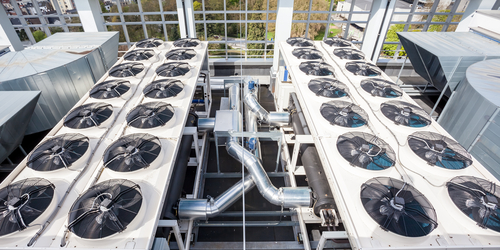
How to Become an HVAC Contractor
With an anticipated growth rate of 3.9% over the next 10 years, there are plenty of opportunities available for those interested in joining the HVAC industry. However, there are several steps that need to take place before you can become a certified HVAC (heating, ventilation, air conditioning) professional. There are a variety of ways you can go through this path, but here’s a walkthrough on the basic steps of how to become an HVAC contractor.

Table of Contents
How to Become an HVAC Contractor: Basic Requirements for HVAC Certification
Let’s begin with a step-by-step look at how to get your HVAC certificate and start getting to work.
Start basic training
It’s possible to work your way up if you want to become an HVAC Contractor or HVAC professional through job training, but many industry experts recommend pursuing a formal program instead. This is largely due to the fact that refrigeration engineers are getting more and more complicated, and your job prospects will be better with formal training. To get said training, you have two main options: going to community college for an associate’s degree or getting an apprenticeship. Here are the differences between the two.
Associate’s degree: Technically, you can also look into a trade school or technical college if you’re not interested in going to community college. Some programs only provide a certificate rather than a formal degree, so be sure to research what credentials you are actually getting for completing the program. Depending on the nature of the program, it can take you anywhere from six months to as long as two years to complete. Some of the topics that will be covered in your coursework include:
— Reading blueprints
— Operating common HVAC equipment
— How to install electrical control wiring
— Refridgeration
— Sheet metal fabrication
Note that these aren’t the only options on the table. The Department of Labor recommends looking into courses in electronics or computer science so contractors know how to work the complex systems that power a lot of modern HVAC equipment. Accounting may not be a bad idea if you know you want to go into business for yourself at some point.
Apprenticeships: There are quite a few ways you can go about looking for an apprenticeship, but the best place to start is looking into different industry organizations and unions. Many of these programs work alongside local schools for the classwork component of the apprenticeship. In order to qualify, you need to be at least 18 years old and have either a high school diploma or your GED. Most programs also require you to pass a drug test, a basic math test and have a driver’s license.
By comparison, an apprenticeship program will take you longer than going to get a degree. Students will be working around 2000 hours a year, as well as completing approximately 144 hours of classwork. However, you will be building up valuable work experience, as well as potentially making connections that can help you get a job later.

Getting an EPA certification
If you plan on working with refrigerants in any capacity as a contractor, you will need to pass a certification exam to show that you know how to handle these materials safely. Topics covered in the exam include:
— Recovering refrigerants
— Proper recycling procedure
— How to ship and dispose of refrigerants (low and high-pressure)
You can generally get this done through community colleges or technical schools, as these are approved by the EPA to provide examples.
Getting work experience
This is the area where those who look for an apprenticeship may have a bit of a leg up. At a minimum, most companies prefer air conditioning contractors with two years of experience. Depending on what state you want to practice in, there may also be a set amount of work experience before you can get your HVAC contractor license. This varies from around 2 years (if you were already an apprentice) to 7 years, (if you did no other training programs). Generally, people meet this requirement by working alongside a journeyman or master technician, performing basic tasks as they learn more about the industry.
Getting your final license
The state requirements from the licensing board can vary from one state to the next, but the common thread is that you need to pass an exam after having the necessary work requirements completed. Other things you may need to do are submitting to a criminal background check, as well as purchasing either performance bonds or liability insurance. Again, based on the state you are in, you may need to do a few hours of continuing education to renew your license.
Continued education as an HVAC technician
Even if you aren’t required to do any continuing education to keep your license, it may not be a bad idea to try and look into some. Taking courses to learn new skills and keep up with industry trends can make you a more appealing job candidate. There are many professional organizations that allow courses and programs for HVAC technicians to improve their skill set.

Once you pass the fundamentals like trade school and getting your professional certification, the next step is working to become a more effective licensed HVAC professional. This applies if you’re signing onto a larger company or going to start your own heating, ventilating, and air business. One common area where things get difficult is the logistical side of things. A single commercial ventilating and air conditioning business is going to have dozens, maybe even hundreds of clients. All of these require a different approach, as well as records to make sure both emergency jobs and preventative maintenance are getting done.
Project management software like eSUB is a key part of that. Air conditioning and refrigeration businesses can take clear financial/materials records to figure out what a job really costs them, as well as make the data accessible to all relevant parties through cloud storage.
How eSUB Can Help
eSUB is a cloud-based project management platform built especially for subcontractors. It seamlessly integrates with leading construction software systems so you can easily switch from your current RFI process to a cloud-based system to upgrade RFI process.
eSUB organizes all of your project information in one place, allows for smooth collaboration, and streamlines communication through its intuitive interface. It also works on your mobile, so you can track projects on the go—no matter where or when—and stay up-to-date.